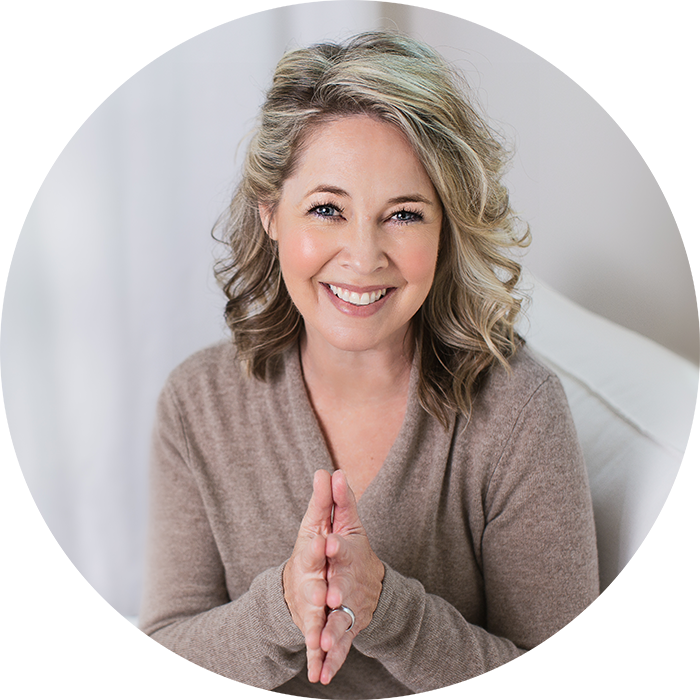Why I meditate
I woke up this morning feeling tired even though I got eight solid hours of sleep last night. Transitioning and training new staff, switching gears to a new summer routine and looking at real estate while we engage in long-term financial planning has got my brain working overtime. And it’s not good. Not only does overthinking raise my stress and cortisol levels, an overly-busy mind keeps me from enjoying more relaxed, creative, “flow” thinking that is so essential to my well-being. And to feeling truly rested (no matter how much sleep I get!).
Besides daily pleasure-full movement (Nia, yoga, walking with friends) and mindful time in nature, the other self-renewal practice that helps me quiet my mind and lessen the need to control all the plates spinning in my orbit, is meditation.
For years, I fought this idea of a morning ritual, of creating dedicated time every day to steep in stillness before entering the world. I had read the research, but I rationalized: “It’s too hard when you’re a parent. I’m too busy. I’ll do it later in the day. I would, but my husband won’t join me. I don’t have the right space. I need a new meditation cushion.” And so on. I worked hard to justify my reluctance, always wondering, “Does it really make a difference?” Today, it seems crazy that I needlessly postponed what I now consider the single most important part of my day.
Marianne Williamson, the internationally known modern mystic and bestselling author of A Return to Love, once said that devoting as little as five minutes every morning to your inner life can set a positive course for your entire day. As I had battled for years trying to commit to a daily twenty-minute meditation practice, this wisdom really spoke to me. Being grateful every morning for five minutes? I could do that. Here are five tips if you’re considering starting a meditation practice:
• Schedule meditation for the same time each day. It works best to meditate early in the morning, since this is often when the house is the most quiet; the morning is also when our minds are most quiet and clear. If you’re not an early-morning person, do it later in the day: take a mid-morning nature break while at work, or wait until after the kids have gone to bed.
• Identify where you’ll pause for your practice. Find or create a space in your home that elicits peace, healing, and self- nurturance. Know that you can go there at any time, and use this as a regular meditation place. Maybe it’s a special reading chair, a creativity altar, or a spot in the backyard under your favorite tree. Or, if setting aside a certain spot isn’t feasible, simply close your office or bedroom door to create a temporary “space.” Identify a quiet parking lot or a nearby green space where you can park alone during your morning commute. Get creative!
• Use a source of comfort and inspiration. To focus their intention and set the tone for the day, many like to read and meditate on an inspirational text or phrase. This could be from a spiritual teaching, the Bible, a favorite book or poem, or even an inspirational card deck.
• Remember to breathe. Sometimes when we meditate, our agitation and anxieties fill our heads with thoughts and to-do lists. When this happens, don’t forget to breathe! Breathing detoxifies, energizes, changes our mood and biochemistry, wakes up the brain, and helps us feel more present and calm. One technique I use when I meditate, is to breathe in very slowly for a count of three, hold for three, and exhale for three — all through the nose with the mouth closed. Keeping your eyes closed while doing this also helps focus your awareness inward.
• Ritualize your morning meditation time. Establish a simple ritual or routine for your morning meditation, which provides a rhythm and structure. For example, you might first light a candle, close your eyes, and rest in stillness. If you like, you could then read a short inspirational text, and close by reflecting on what you’re grateful for or setting an intention for the day. You might ask for guidance on an issue or help releasing feelings that have been bothering you. Choose a rhythm and flow that works for you. (More tips and guidance on daily meditations practices in my new book Nurturing the Soul of Your Family.)
Above all, release “shoulds” or “have tos.” There is no right or wrong way to do this. Keep it simple, maintain a sense of humor, and — above all — make it personally meaningful. Joan, a meditation teacher I know, says, “How do you know when you’ve had a successful meditation? It’s over. Don’t worry about the results. Just creating the space for stillness and accepting whatever unfolds is enough! Every time you come to your cushion will be different.” Allow yourself to experience what it’s like to be fully present and comfortable sitting in silence. And be easy on yourself. If this is new, even just starting with five minutes of quiet before you begin your day is huge!
Lastly, give this time. You may not experience immediate or consistent results, but you still receive tremendous benefit from regular practice. Even on the days when my thoughts are ricocheting around like exploding popcorn, I still feel better after I meditate than I did before. A spiritual mentor once said to me, “Want to experience a little bit of peace? Meditate once a week. Want to experience a lot of peace? Meditate every day.” For a growing number of us, meditation is the secret weapon for maintaining our sanity!
INVITE: I’d love to support you in developing a personal meditation practice. Here are two immediate opportunities: my June 20-22 self-renewal retreat in the Berkshire Mountains of MA and my online course: Mother’s Guide to Self-Renewal (many guided meditations in this beautiful self-paced audio course that includes a “tribe” for support).
Subscribe here to Live Inside Out, a weekly blog written by work-life balance/mindfulness teacher/author and Career Strategists president, Renée Peterson Trudeau. Her work has appeared in The New York Times, Good Housekeeping and more. Thousands of women in ten countries are becoming RTA-Certified Facilitators and leading/joining self-care groups based on her award-winning curriculum. She is the author of The Mother’s Guide to Self-Renewal and Nurturing the Soul of Your Family: 10 Ways to Reconnect and Find Peace in Everyday Life. She lives in Austin, Texas, with her husband and 12 year-old son. More on her background here.
Photo: Kripalu Center for Yoga & Health in the summer—divine! Join me here in two weeks. Email fanny at reneetrudeau dot com with any questions about our upcoming, almost sold-out retreat.



